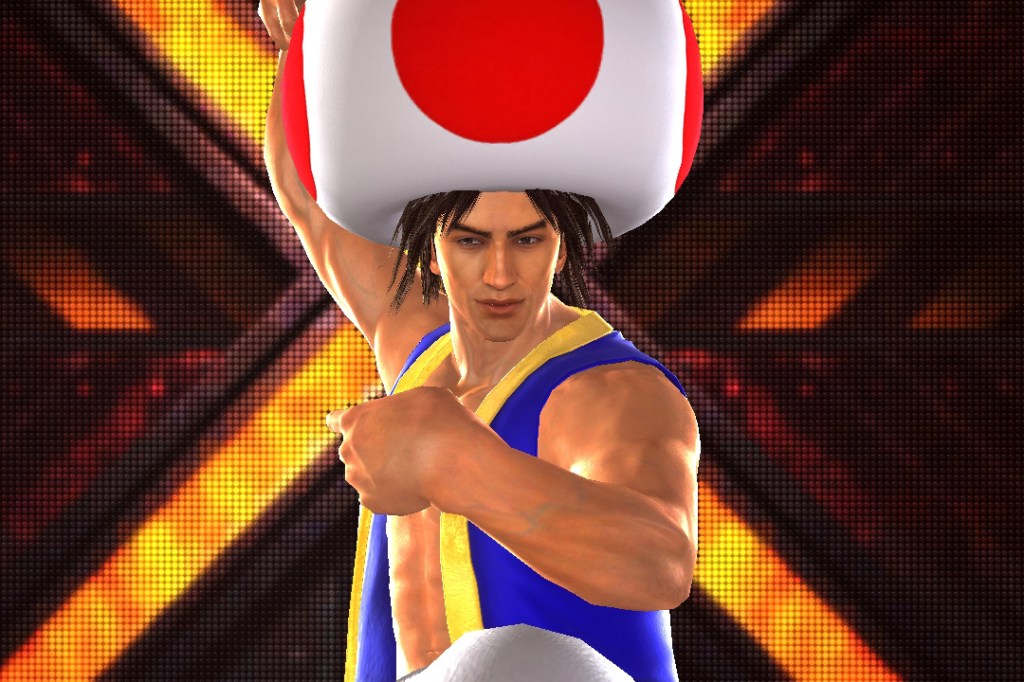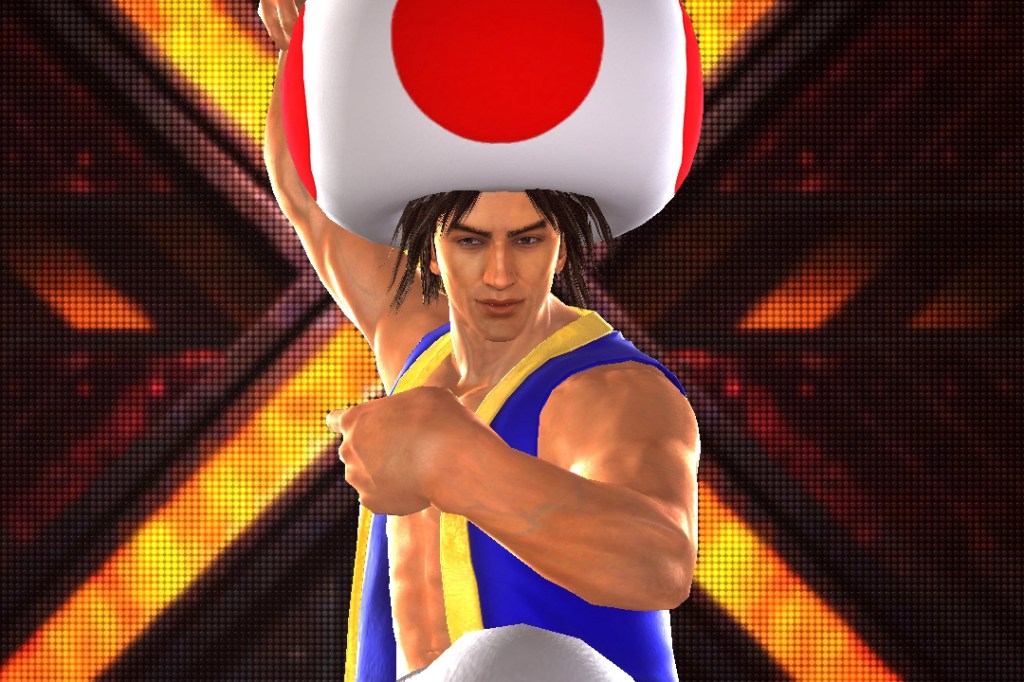
To understand Tekken is to understand PlayStation itself.
Namco’s 3D fighting series and Sony’s console have a long history together, and both erupted onto the scene in 1995 by providing a fresh, new alternative to the current options. There was Street Fighter, of course, Capcom’s 2D fighting game that sold a lot of Super Nintendo consoles. And Sega had plenty of tricks up its cavernous sleeves. But something about Tekken really caught the public attention, bringing it from the arcades to home consoles to mobile and online fighting, becoming a mainstay of pro gaming competitions along the way.
As Tekken 8 is launched, Stuff looks at what makes the games so popular.
Play has no limits
Games and consoles aren’t created in isolation. The story of how the PlayStation sprang from a collaboration with Nintendo to develop an ill-fated CD-ROM addon for the SNES is well known. But Tekken came from the other direction: Sega. The director of Tekken, Seiichi Ishii, was also the designer of 1993’s Virtua Fighter. After that, Namco were able to persuade other members of the VF team to move over too. Tekken would use texture-mapped polygons – something the Saturn struggled with – and a 60fps framerate to prove the superiority of Sony’s hardware. And it had to begin in the arcades.
Arcades were hot in Japan in the ‘90s. Sega, Taito, Capcom and Namco were all releasing new games in cabinets often powered by unusual and specially designed hardware. This meant home console ports of the games could miss out on some of the magic, or speed, that made them great to play. Sega’s Model 1 was already a few years old in 1994. So when Namco’s System 11 arrived it had better 3D graphics capabilities than previous boards. It also had a secret: it was basically a PlayStation. This meant the home console conversions were as close to the arcade original as possible. That is to say, apart from the massive difference between the PS pad and the arcade’s stick and buttons, of course. As a selling point, however, it was pure gold.
Tekken shot into the top five arcade machines in Japan within months of release, and would go on to become the fourth highest grossing Japanese coin-op of 1995, though it was beaten by Virtua Fighter 2. Its conversion to the PlayStation was assured, and it would be the first PS game to sell over a million units, topping the charts in the run-up to Christmas ’95.
Rave reviews
Tekken was originally called Rave War, and an arcade prototype of that name shown at at AMOA 1994 (an arcade trade show in San Antonio, Texas) was compared favourably to Sega’s Virtua Fighter 2, a game that ran on Model 2, a new arcade board Sega had developed with Lockheed Martin that could display 300,000 textured polygons at 60FPS. VF2 looked good, but as several magazines noted at the time of its console launch, the renamed Tekken (Iron Fist in Japanese) had the edge in playability. It was just more fun to brawl with those characters.
And what characters they were. You’ve got the jaguar-masked King, inspired by professional wrestlers from Japan and Mexico, who’s a favourite among fans of technical grappling moves. There’s American cop Marshall Law and the martial arts-loving biker Paul Phoenix, just some relatively normal people who happen to be extremely dangerous. And then it gets silly, from an alien swordsman with mechanical arms and Jack the Russian robot, to a bear and an actual devil. These would be novel but unnecessary characters, if not for their distinct fighting styles that needed to be mastered to ensure your opponent’s defeat. Button bashing this ain’t.
Tekken took a different approach to its fighting than many other games – namely a lack of special moves and focus on artfully constructed strings of punches and kicks, plus the way button-presses are mapped to limbs rather than specific actions – but it uses the same over-the-top character designs as everyone else.
Tag, you’re it


The original Tekken was released just a few months after the debut of the PlayStation, and the games’ relationship with Sony’s console saw Tekken Tag Tournament emerge as a launch title for the PS2 (with its brilliant unlockable bowling mode).
Tag-team fighting wasn’t new – wrestling games such as American Tag-Team Wrestling, plus the WWF and WCW titles, had been doing it for ages – but as a launch title that blended the gameplay of Tekken 3 with the PS2’s graphics processor and the novelty of tag battles, it was a winner and was well received.
It wasn’t until Tekken 6 in 2007 that the series became available on non-Sony consoles, and Tekken Tag Tournament 2 would become a launch title for Nintendo’s Wii U (which explains some of the alternate costumes).
Tekken 3, meanwhile, introduced a largely new cast of fighters, and became the fifth best-selling PlayStation game following its 1997 launch, beating the likes of Tomb Raider, Resident Evil 2 and Metal Gear Solid.
Tekken 4 and Tekken Tag Tournament became the first Tekken games to see competition at the Evo fighting games tournament in 2004. The event had switched to using consoles instead of arcade cabinets, and Tekken’s place among pro fighting game royalty was assured.
Tekken goes global


If you watch YouTube videos of pro players competing in Tekken matches, they can appear almost superhuman. The way they anticipate their opponents’ moves, reacting within 15 frames with the perfect counter, speaks of many long hours spent doing nothing else. The move strings are memorised. The exact reach of each character known, ready to whiff punish when a move doesn’t connect. It takes precision and timing that few can approach.
Contrast this with a game of two player Tekken at home or online. The idea of whiff punishment – attacking your opponent in the split-second after they’ve missed an attack, so their own recovery animation makes it impossible for them to defend – may never even cross your mind. Playing at home is fun. But being online opens up a whole world of competition that sees the very best rise to the top.
Evo 2023 offered a $25,000 prize pool to the winners of its Tekken 7 tournament. While lower than the prize pools offered for games such as Ultra Street Fighter IV ($72,2700) and MultiVersus ($100,000), this is not to be ignored. The highest-paid Tekken player, according to escharts.com, is Dominique McLean, AKA SonicFox. McLean has pocketed over $700,000 as a result of mastering the game.
Tekken 8 will be replacing Tekken 7 in 2024 in the Tekken World Tour, which will begin at Evo Japan in April. The first place winner in 2023 took home $50,000, so it’s worth brushing up on your skills.
The plot thickens
This fighting chaos is all in service to a complex plot that centres on the King of Iron Fist martial arts tournament and Kazuya Mishima’s desire for revenge on his father, Heihachi. This follows an unfortunate incident in his childhood, but which has been added to across the eight major releases.
But there’s a lot more to Tekken than a convoluted revenge plot, however. There have been side-stories and crossovers. Street Fighter and Tekken came together in 2012 for tag-team battles in Street Fighter X Tekken, something no one ever expected to happen. There’s the Tekken Force modes, which turn the game into a side-scrolling beat ‘em up. There have also been new characters, including a dinosaur and a kangaroo, so you know it’s not getting too serious.
This all brings us to 2024’s Tekken 8, a return to series form in many ways. It’s an approachable package that will attract those who’ve been put off by the series’ complexity in the past. It remains a hugely popular fighting game that’s had plenty of time to evolve and mature into something now spread across consoles and PC, with a grand total of 34 playable characters in its latest iteration.
Despite its now multi-platform nature, Tekken is still a series associated with the PlayStation. And its rise is mirrored in the way Sony’s console now fights the contenders from Microsoft and Nintendo in the arena of videogames. It may be complicated, and it may be silly. But this is a series that gamers have taken to their hearts and Iron Fists.






